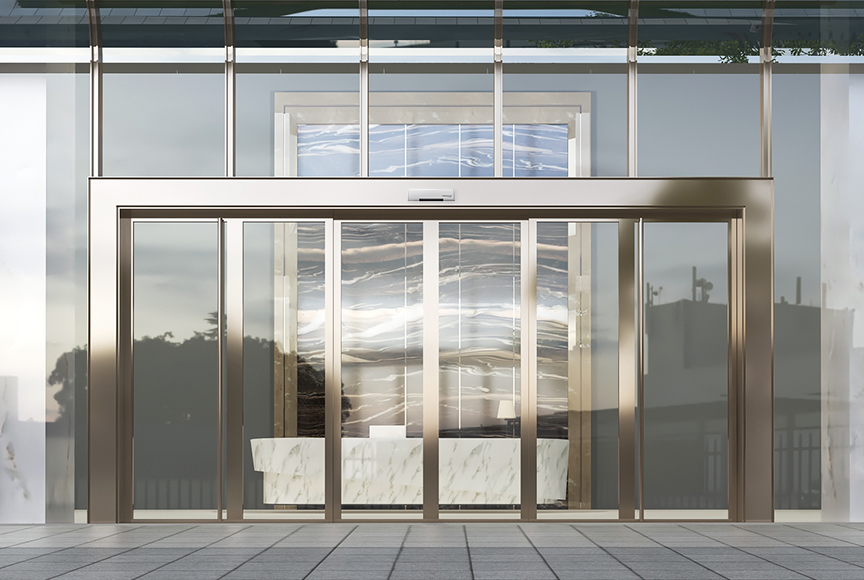Quali sono i requisiti di manutenzione per un sensore automatico della porta scorrevole OEM?
I sensori automatici delle porte scorrevoli sono componenti essenziali negli edifici moderni, fornendo comodità, sicurezza e accessibilità. Questi sensori svolgono un ruolo cruciale nel rilevamento del movimento e della presenza, facilitando il funzionamento regolare delle porte e prevenendo gli incidenti. Per garantire la continua affidabilità e funzionalità di questi sensori, è fondamentale una corretta manutenzione. Questo articolo descrive i requisiti essenziali di manutenzione per OEM sensori automatici per porte scorrevoli, guidano i responsabili dell'impianto e il personale addetto alla manutenzione nel preservare l'integrità dei loro sistemi di porte.

Pulizia e ispezione regolari
Pulizia e ispezione regolari sono compiti di manutenzione fondamentali per sensori automatici per porte scorrevoli. Polvere, sporco e detriti possono accumularsi sulle superfici del sensore, ostacolandone la funzionalità e riducendo la sensibilità. Pulire regolarmente le lenti e gli alloggiamenti dei sensori con un panno morbido e privo di peluche inumidito con un detergente delicato o una soluzione di pulizia delicata. Evitare di utilizzare materiali abrasivi o prodotti chimici aggressivi, in quanto questi possono danneggiare i componenti del sensore. Inoltre, ispezionare i sensori per individuare segni di danni fisici, come crepe o corrosione, e risolvere tempestivamente eventuali problemi per prevenire ulteriori deterioramenti.
Regolazione e calibrazione
Nel tempo, fattori ambientali, usura o cambiamenti nella dinamica degli edifici possono richiedere modifiche alle impostazioni del sensore o ricalibrazione. Esamina periodicamente la sensibilità del sensore, la gamma di rilevamento e i tempi di attivazione per garantire prestazioni ottimali. Seguire le linee guida del produttore per regolare i parametri del sensore, utilizzando strumenti di regolazione dedicati, se forniti. La taratura può comportare la messa a punto dei livelli di sensibilità, la regolazione degli angoli di rilevamento o il ripristino delle soglie del sensore per tener conto dei cambiamenti nelle condizioni ambientali o nei modelli di traffico.
La verifica dell'allineamento e del posizionamento
L'allineamento e il posizionamento corretti dei sensori sono fondamentali per un rilevamento accurato e un funzionamento affidabile della porta. Verificare che i sensori siano allineati correttamente con il percorso di movimento della porta e posizionati all'altezza e all'angolo appropriati per rilevare efficacemente pedoni o ostacoli. Utilizzare strumenti di allineamento o modelli forniti dal produttore per garantire un posizionamento preciso del sensore. Controllare periodicamente eventuali disallineamenti o deviazioni dalla posizione raccomandata, soprattutto dopo la manutenzione o le riparazioni al sistema delle porte.
Ispezione del cablaggio e delle connessioni
Connessioni elettriche e integrità del cablaggio sono aspetti essenziali della manutenzione del sensore. Ispezionare cablaggi, connettori e terminali per individuare segni di danneggiamento, usura o corrosione. Assicurarsi che tutte le connessioni siano sicure e prive di detriti o contaminazioni. Qualsiasi cavo esposto o isolamento sfilacciato deve essere prontamente riparato o sostituito per evitare guasti elettrici o cortocircuiti. Eseguire periodicamente test elettrici o controlli di continuità per verificare l'integrità dei circuiti e delle connessioni dei sensori.
Aggiornamenti firmware e manutenzione software
Per i sensori dotati di unità di controllo elettroniche o funzionalità programmabili, rimanere aggiornati sugli aggiornamenti firmware e la manutenzione del software è fondamentale. I produttori possono rilasciare aggiornamenti firmware per risolvere miglioramenti delle prestazioni, correzioni di bug o vulnerabilità di sicurezza. Seguire le raccomandazioni del produttore per gli aggiornamenti firmware, garantendo la compatibilità con le configurazioni hardware e software esistenti. Inoltre, rivedere e regolare periodicamente le impostazioni del sensore utilizzando interfacce software dedicate per ottimizzare le funzionalità e adattarsi alle mutevoli condizioni ambientali o ai requisiti operativi.
Documentazione e conservazione dei registri
Mantenere una documentazione completa e registri delle attività di manutenzione dei sensori è essenziale per monitorare le prestazioni, identificare le tendenze e garantire la responsabilità. Mantieni registri dettagliati di programmi di pulizia, ispezioni, regolazioni, riparazioni e aggiornamenti firmware per ogni unità sensore. Documentare eventuali problemi osservati, attività di manutenzione eseguite e azioni correttive intraprese. Queste informazioni servono da riferimento prezioso per la risoluzione dei problemi, le richieste di garanzia e la pianificazione della manutenzione futura.
Conclusione
Una corretta manutenzione dei sensori automatici per porte scorrevoli OEM è essenziale per preservare la loro affidabilità, longevità e prestazioni. Aderendo a un regime di manutenzione proattivo che comprende pulizia, ispezione, regolazione, calibrazione, ispezione dei cavi, aggiornamenti del firmware e documentazione, i gestori delle strutture possono garantire che i loro sistemi automatici di porte funzionino senza intoppi e in sicurezza. La manutenzione regolare non solo migliora la funzionalità del sensore, ma riduce anche i tempi di inattività, riduce i costi di riparazione e prolunga la durata dell'intero sistema di porte, contribuendo a un ambiente edilizio più sicuro ed efficiente.







